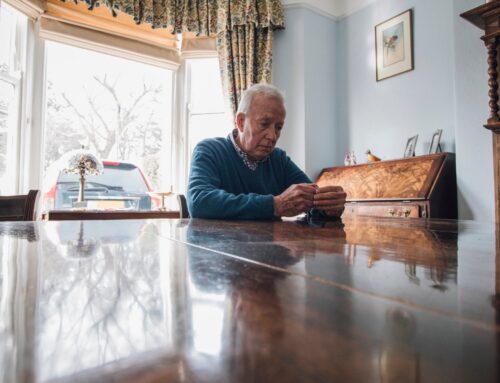Staying safe, secure and independent is vitally important to us as we grow older.
But each year, one in every three adults ages 65 or older falls. And 2 million folks are treated in emergency departments for fall-related injuries, according to the Centers for Disease Control and Prevention.
And the risk of falling increases with each decade of life.
The long-term consequences of fall injuries, such as hip fractures and traumatic brain injuries, can impact the health and independence of older adults.
Thankfully, falls are not an inevitable part of aging. In fact, many falls can be prevented. Everyone can take actions to protect the older adults they care about.
Ask yourself the following questions:
- Are the everyday tasks that you once took for granted are becoming more difficult?
- Do you feel less steady on your feet?
- Is it more and more difficult to get out of your chair or out of your car?
There are many ways you can reduce the risk of falling at your home and plenty of ways to prevent falls.
The CDC encourage you to:
- Get some exercise. Lack of exercise can lead to weak legs and this increases the chances of falling. Exercise programs such as Tai Chi and yoga can increase strength and improve balance, making falls much less likely.
- Be mindful of medications. Some medicines – or combinations of medicines – can have side effects such as dizziness or drowsiness. This can make falling more likely. Having a doctor or pharmacist review all medications can help reduce the chance of risky side effects and drug interactions.
- Keep your vision sharp. Poor vision can make it harder to get around safely. Older adults should have their eyes checked every year and wear glasses or contact lenses with the right prescription strength to ensure they are seeing clearly.
- Eliminate hazards at home.About half of all falls happen at home. A home safety check can help identify potential fall hazards that need to be removed or changed, such as tripping hazards, clutter, and poor lighting.
Around your house, be sure to:
- Remove things you can trip over (such as papers, books, clothes, and shoes) from stairs and places where you walk.
- Install handrails and lights on all staircases.
- Remove small throw rugs or use double-sided tape to keep the rugs from slipping.
- Keep items you use often in cabinets you can reach easily without using a step stool.
- Put grab bars inside and next to the tub or shower and next to your toilet.
- Use non-slip mats in the bathtub and on shower floors.
- Improve the lighting in your home. As you get older, you need brighter lights to see well. Hang lightweight curtains or shades to reduce glare.
- Wear shoes both inside and outside the house. Avoid going barefoot or wearing slippers.






Leave A Comment